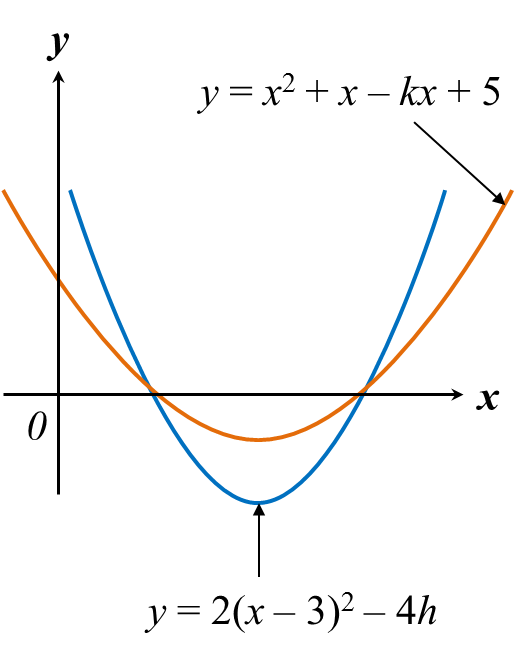Question 11:

Diagram above shows the graphs of the curves y = x2 + x – kx + 5 and y = 2(x – 3) – 4h that intersect the x-axis at two points. Find
(a) the value of k and of h,
(b) the minimum value of each curve.
Solution:
(a)
(b)

Diagram above shows the graphs of the curves y = x2 + x – kx + 5 and y = 2(x – 3) – 4h that intersect the x-axis at two points. Find
(a) the value of k and of h,
(b) the minimum value of each curve.
Solution:
(a)
(b)
Question 12:
Quadratic function f(x) = x2 – 4px + 5p2 + 1 has a minimum value of m2 + 2p, where m and p are constants.
(a) By using the method of completing the square, shows that m = p – 1.
(b) Hence, find the values of p and of m if the graph of the quadratic function is symmetry at x = m2 – 1.
Solution:
(a)
(b)
Quadratic function f(x) = x2 – 4px + 5p2 + 1 has a minimum value of m2 + 2p, where m and p are constants.
(a) By using the method of completing the square, shows that m = p – 1.
(b) Hence, find the values of p and of m if the graph of the quadratic function is symmetry at x = m2 – 1.
Solution:
(a)
(b)